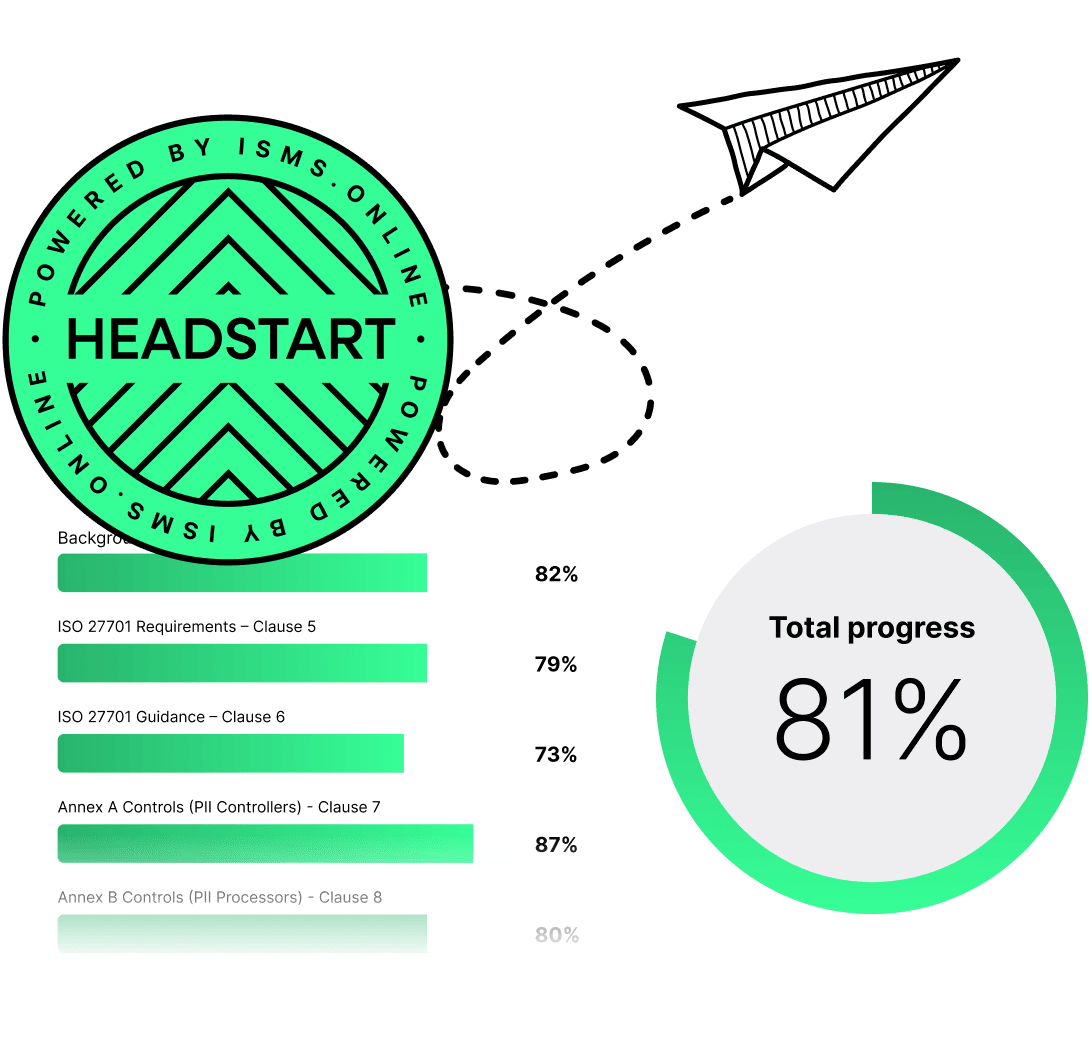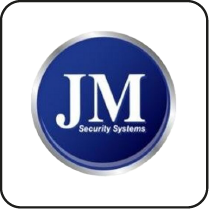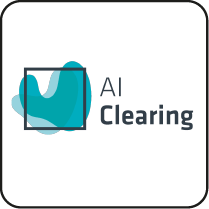Introduction to ISO 27001:2022
What is ISO 27001:2022 and Why is it Significant?
ISO 27001:2022 is an internationally recognized standard for Information Security Management Systems (ISMS). It provides a systematic approach to managing sensitive company information, ensuring it remains secure. This standard is significant because it offers a comprehensive framework that organizations of all sizes and industries can adopt to protect their information assets. Adhering to ISO 27001:2022 demonstrates a commitment to information security, enhancing reputation and building trust with clients, partners, and stakeholders.
How Does ISO 27001:2022 Enhance Information Security Management?
ISO 27001:2022 enhances information security management through a structured framework that includes several key components:
- Risk Management: Identifies, assesses, and mitigates risks systematically, ensuring potential threats are addressed proactively (Clause 6.1.2). Our platform’s dynamic risk mapping and monitoring tools support this process.
- Compliance: Helps organizations meet legal, regulatory, and contractual requirements, reducing the risk of non-compliance penalties (Clause 4.2). ISMS.online’s compliance tracking database keeps you updated with evolving standards.
- Continuous Improvement: Emphasizes ongoing monitoring and improvement of security practices, ensuring the ISMS evolves with emerging threats and technological advancements (Clause 10.2). Our platform facilitates this with automated workflows and reporting.
- Context Analysis: Involves understanding internal and external issues that can affect information security, providing a holistic view of the security landscape (Clause 4.1).
- Leadership Commitment: Ensures top management support and resource allocation, crucial for the successful implementation and maintenance of the ISMS (Clause 5.1).
- Planning: Involves setting objectives and planning actions to achieve them, ensuring security goals align with organizational objectives (Clause 6.2).
- Support: Provides necessary resources, training, and awareness to ensure all employees are equipped to uphold information security standards (Clause 7.2). ISMS.online offers pre-built templates and training modules to streamline this process.
- Operation: Focuses on implementing and managing security controls to protect information assets (Clause 8.1).
- Performance Evaluation: Involves monitoring, measuring, and evaluating ISMS performance to identify areas for improvement (Clause 9.1). Our platform’s audit management tools assist in this evaluation.
- Improvement: Encourages continual improvement through corrective actions and updates to the ISMS (Clause 10.1).
Key Benefits of Implementing ISO 27001:2022 in Wyoming
Implementing ISO 27001:2022 in Wyoming offers several key benefits:
- Regulatory Compliance: Assists organizations in meeting state and federal regulatory requirements, ensuring they avoid legal penalties and maintain good standing.
- Risk Reduction: Minimizes the risk of data breaches and cyber-attacks by implementing robust security controls and proactive risk management practices.
- Reputation Enhancement: Builds trust with clients, partners, and stakeholders by demonstrating a commitment to protecting sensitive information.
- Market Advantage: Differentiates organizations in competitive markets, making them more attractive to potential clients and partners.
- Operational Efficiency: Streamlines processes and reduces inefficiencies by implementing a structured approach to information security management.
- Customer Confidence: Demonstrates a commitment to protecting customer data, enhancing customer loyalty and satisfaction.
How Does ISO 27001:2022 Differ from Previous Versions?
ISO 27001:2022 introduces several updates and enhancements compared to previous versions:
- Updated Controls: Reflects the latest security threats and technological advancements, ensuring organizations are equipped to handle modern security challenges.
- Annex A Changes: Enhanced and restructured controls in Annex A provide clearer guidance on implementing security measures.
- Alignment with Other Standards: Harmonized with other ISO standards, making it easier for organizations to integrate ISO 27001:2022 with other management systems.
- Focus on Risk: Greater emphasis on risk management and treatment, ensuring organizations adopt a proactive approach to identifying and mitigating risks.
- Documentation Requirements: Updated documentation and reporting requirements streamline the process of maintaining and demonstrating compliance.
- User Endpoint Devices: Specific controls for managing user endpoint devices address the growing security risks associated with remote work and mobile devices (Annex A.8.1).
- Cloud Services: Enhanced controls for cloud service security ensure organizations can securely leverage cloud technologies (Annex A.5.23).
- Incident Management: Improved processes for incident response and learning from incidents help organizations quickly recover from security breaches and prevent future occurrences (Annex A.5.26).
Introduction to ISMS.online and Its Role in Facilitating ISO 27001 Compliance
ISMS.online is a comprehensive platform designed to simplify ISO 27001 compliance. Our platform offers a range of features that streamline the compliance process, saving time and resources for organizations:
- Risk Management: Tools for dynamic risk mapping and monitoring help organizations identify and address potential threats proactively.
- Policy Management: Pre-built templates, version control, and document access make it easy to develop, manage, and update security policies.
- Incident Management: Incident tracking, workflow automation, and reporting ensure organizations can respond to security incidents quickly and effectively.
- Audit Management: Templates, audit planning, corrective actions, and documentation support organizations in preparing for and conducting internal and external audits.
- Compliance Tracking: A database of regulations, alert systems, and training modules help organizations stay up-to-date with evolving standards and requirements.
Our platform is user-friendly, scalable, and provides ongoing support to ensure organizations can maintain compliance with ISO 27001:2022. By using ISMS.online, you can streamline your compliance efforts, enhance your information security management, and build trust with your stakeholders.
Book a demoRegulatory Requirements in Wyoming
What Specific Regulatory Requirements Must Be Met in Wyoming?
In Wyoming, organizations must adhere to both state-specific and federal regulatory frameworks to ensure robust information security. Key state-specific regulations include:
- Wyoming Data Privacy Act: Mandates the protection of personal information, requiring organizations to implement stringent security measures.
- Wyoming Consumer Protection Act: Outlines obligations for businesses to safeguard consumer data, emphasizing transparency and security.
Federal regulations also play a critical role:
- HIPAA: Ensures the protection of patient information for healthcare organizations.
- GDPR: Requires rigorous data protection for organizations handling data of EU citizens.
- CCPA: Emphasizes consumer data rights and protection, necessitating robust security practices.
How Does ISO 27001:2022 Help in Meeting These Requirements?
ISO 27001:2022 provides a structured framework that aligns with these regulatory requirements:
- Clause 4.2: Ensures the ISMS considers the needs and expectations of relevant stakeholders, including regulatory bodies.
- Clause 6.1.2: Outlines a structured approach to identifying and assessing risks, ensuring proactive compliance.
- Annex A.5.7: Utilises threat intelligence to identify and mitigate risks.
- Annex A.8.8: Ensures technical vulnerabilities are promptly addressed.
- Annex A.5.1: Establishes comprehensive policies that align with regulatory requirements.
- Annex A.5.10: Defines acceptable use policies to ensure proper data handling practices.
Our platform, ISMS.online, supports these requirements by offering dynamic risk mapping, compliance tracking, and policy management tools, ensuring your organisation remains compliant and secure.
What Are the Legal Implications of Non-Compliance?
Non-compliance with regulatory requirements can result in severe legal implications:
- Penalties and Fines: Non-compliance with GDPR and CCPA can lead to significant fines. HIPAA violations can result in substantial financial penalties and mandatory corrective action plans.
- Reputational Damage: Non-compliance can erode trust among customers and stakeholders, leading to long-term reputational damage.
- Legal Actions: Organisations may face lawsuits and regulatory investigations, resulting in additional legal challenges.
- Operational Disruptions: Non-compliance increases the risk of data breaches, leading to operational disruptions and financial losses.
How Do State and Federal Regulations Interact?
Understanding the interaction between state and federal regulations is crucial for comprehensive compliance:
- Preemption and Supersession: Federal regulations may preempt state regulations in certain cases, requiring organisations to prioritise federal compliance.
- Complementary Requirements: State and federal regulations often complement each other, providing a comprehensive framework for information security.
- Harmonisation of Standards: Harmonising state and federal requirements ensures a cohesive approach to compliance, reducing complexity.
- Case-by-Case Basis: The interaction between state and federal regulations may vary based on the industry and specific regulatory context, requiring tailored compliance strategies.
Additional Considerations
- Regulatory Updates: Continuous monitoring is essential to stay updated with regulatory changes and maintain compliance.
- ISMS.online Features: Our platform assists in tracking regulatory changes and maintaining compliance through comprehensive compliance tracking and alert systems.
By adhering to ISO 27001:2022, your organisation can ensure compliance with Wyoming’s regulatory requirements, mitigate risks, and build trust with stakeholders.

ISO 27001 made easy
An 81% Headstart from day one
We’ve done the hard work for you, giving you an 81% Headstart from the moment you log on. All you have to do is fill in the blanks.

Steps for Implementing ISO 27001:2022
Initial Steps for Starting ISO 27001:2022 Implementation
Begin with a gap analysis to identify current security measures and areas needing improvement. This involves a comprehensive review of existing practices against ISO 27001:2022 requirements, documenting gaps, and prioritising them based on risk and impact (Clause 4.1). Securing management commitment is crucial. Present the benefits and importance of ISO 27001:2022 to senior management, obtain formal commitment, and allocate necessary resources (Clause 5.1). Define the scope of the ISMS by identifying information assets to be protected and determining the physical and logical boundaries (Clause 4.3). Engage relevant stakeholders through meetings and workshops, documenting their requirements and expectations (Clause 4.2).
Planning the Implementation Strategy
Develop a detailed project plan outlining tasks, timelines, responsibilities, and milestones. Perform a comprehensive risk assessment using methodologies such as SWOT analysis and risk matrices to identify assets, threats, vulnerabilities, and impacts (Clause 6.1.2). Develop essential policies and procedures aligned with ISO 27001:2022 requirements, ensuring they are reviewed, approved, and communicated to all employees (Annex A.5.1). Allocate necessary resources, including personnel, budget, and technology, to support the implementation (Clause 7.1).
Resources Needed for Successful Implementation
Designate a project team with clear roles and responsibilities, including an ISMS manager. Budget for training, technology investments, consultancy services, and certification costs. Invest in necessary tools and technologies for risk management, policy management, and compliance tracking. Develop and deliver training and awareness programs to ensure all employees understand their roles in maintaining information security (Clause 7.2). ISMS.online offers pre-built templates and training modules to streamline this process.
Ensuring a Smooth Transition
Implement a robust change management process to handle transitions smoothly and address resistance (Clause 8.1). Develop a communication plan to keep all stakeholders informed and engaged throughout the implementation process. Conduct pilot tests to validate the effectiveness of new policies and procedures before full-scale implementation. Establish continuous monitoring mechanisms to track progress, identify issues, and make necessary adjustments (Clause 9.1). Implement feedback loops to gather input from employees and stakeholders, ensuring continuous improvement (Clause 10.2). Our platform’s dynamic risk mapping and monitoring tools support this process.
By following these steps, your organisation in Wyoming can effectively implement ISO 27001:2022, ensuring robust information security management and compliance with regulatory requirements.
Risk Management and Assessment
What Methodologies Are Used for Risk Assessment in ISO 27001:2022?
ISO 27001:2022 employs several methodologies to ensure comprehensive risk assessment:
- SWOT Analysis: Evaluates strengths, weaknesses, opportunities, and threats related to information security.
- Risk Matrices: Visual tools plotting risks based on likelihood and impact, aiding in prioritisation.
- Qualitative and Quantitative Assessments: Combine expert judgment with numerical data for a detailed risk understanding.
- Asset-Based Risk Assessment: Focuses on risks to specific information assets, ensuring critical assets are protected.
- Threat and Vulnerability Analysis: Identifies potential threats and vulnerabilities, assessing their impact.
How Should Organisations Identify and Evaluate Risks?
Organisations should adopt a systematic approach:
- Asset Identification: Catalogue all information assets, including data, hardware, software, and personnel (Clause 8.1). Our platform’s asset management tools streamline this process.
- Threat Identification: Identify potential threats such as cyber-attacks, natural disasters, and human errors.
- Vulnerability Assessment: Assess vulnerabilities that could be exploited by identified threats (Annex A.8.8). ISMS.online’s vulnerability management features facilitate this assessment.
- Impact Analysis: Evaluate the potential impact of threats exploiting vulnerabilities.
- Risk Estimation: Estimate the likelihood and impact using qualitative or quantitative methods.
- Risk Prioritisation: Prioritise risks based on their likelihood and impact (Clause 6.1.2).
What Are the Best Practices for Risk Treatment?
Effective risk treatment involves:
- Risk Avoidance: Modify processes to eliminate risks.
- Risk Reduction: Implement controls to reduce likelihood or impact (e.g., firewalls, encryption) (Annex A.8.1). Our platform’s policy management tools assist in implementing these controls.
- Risk Sharing: Transfer risks to third parties (e.g., insurance).
- Risk Acceptance: Accept risks within the organisation’s tolerance, document rationale, and monitor regularly.
How Can Continuous Risk Monitoring Be Maintained?
Continuous risk monitoring is crucial for maintaining an effective ISMS:
- Regular Risk Assessments: Conduct periodic assessments to identify new risks and evaluate existing controls (Clause 9.1). ISMS.online’s dynamic risk mapping supports this ongoing evaluation.
- Automated Monitoring Tools: Use tools to continuously monitor security events and vulnerabilities.
- Incident Reporting and Response: Implement mechanisms for prompt incident reporting and response (Annex A.5.24). Our incident management features streamline this process.
- Performance Metrics: Establish KPIs and metrics to measure risk management effectiveness.
- Feedback Loops: Integrate feedback from assessments, audits, and incidents into continuous improvement processes (Clause 10.2). Our platform’s audit management tools facilitate this integration.
By adhering to these methodologies and best practices, organisations in Wyoming can effectively manage and mitigate risks, ensuring robust information security and compliance with ISO 27001:2022. Our platform, ISMS.online, supports these efforts with dynamic risk mapping, automated monitoring tools, and comprehensive compliance tracking, making it easier for you to maintain a secure and compliant ISMS.

Free yourself from a mountain of spreadsheets
Embed, expand and scale your compliance, without the mess. IO gives you the resilience and confidence to grow securely.

Developing Policies and Procedures
Essential Policies Required for ISO 27001:2022
To achieve ISO 27001:2022 compliance, organizations must establish a set of essential policies that align with the standard’s requirements. These policies form the backbone of an effective Information Security Management System (ISMS) and ensure comprehensive coverage of all critical areas. The key policies include:
- Information Security Policy (Clause 5.2): Sets the direction and principles for managing information security within the organization.
- Access Control Policy (Annex A.5.15): Defines how access to information and systems is granted, managed, and revoked.
- Risk Management Policy (Clause 6.1.2): Outlines the approach for identifying, assessing, and treating risks.
- Incident Response Policy (Annex A.5.24): Details procedures for responding to and managing information security incidents.
- Data Classification Policy (Annex A.5.12): Provides guidelines for classifying and handling information based on its sensitivity.
- Acceptable Use Policy (Annex A.5.10): Specifies acceptable and unacceptable use of organizational assets.
- Business Continuity Policy (Annex A.5.29): Ensures the organization can continue operations during and after a disruption.
- Supplier Security Policy (Annex A.5.19): Manages information security risks associated with third-party suppliers.
- Cryptography Policy (Annex A.8.24): Governs the use of cryptographic controls to protect information.
- Physical Security Policy (Annex A.7.1): Addresses the protection of physical assets and facilities.
Developing and Documenting Policies
Developing and documenting these policies requires a systematic approach to ensure they are comprehensive, clear, and aligned with organizational objectives. Organizations should involve relevant stakeholders (Clause 4.2) and utilize standardized templates for consistency. Clear and concise language is essential to ensure policies are easily understood by all employees. Implementing a formal process for reviewing, approving, and updating policies (Clause 7.5.2) and maintaining version control (Clause 7.5.3) ensures policies remain relevant and effective. Our platform, ISMS.online, offers pre-built templates and version control features to streamline this process.
Role of Procedures in Maintaining Compliance
Procedures play a crucial role in maintaining compliance by providing detailed, step-by-step instructions for implementing policies. They ensure consistent execution and help demonstrate compliance during audits. Procedures serve as training materials for employees (Clause 7.2), ensuring they understand their roles and responsibilities in maintaining information security. Detailed procedures for incident response (Annex A.5.26) ensure timely and effective handling of security incidents, minimizing impact and facilitating recovery. ISMS.online’s incident management features support this by automating workflows and reporting.
Effective Communication of Policies
Effective communication of policies is essential to ensure all employees understand and adhere to the established guidelines. Training programs (Clause 7.2), regular updates, accessible documentation (Clause 7.5.3), engagement activities, and feedback mechanisms (Clause 10.2) are strategies for effectively communicating policies. By employing these strategies, organizations can ensure all employees are informed, engaged, and compliant. ISMS.online provides training modules and centralized document management to facilitate this communication.
Training and Awareness Programs
Why is Training Important for ISO 27001:2022 Compliance?
Training is crucial for embedding a culture of security within an organisation. It ensures that employees understand their roles in maintaining information security, which is vital for compliance with ISO 27001:2022. This standard mandates regular training and awareness programmes (Clause 7.2) to maintain a high level of information security. Effective training mitigates risks by equipping employees to identify and respond to security threats, thus reducing the likelihood of breaches. Our platform, ISMS.online, offers comprehensive training modules to facilitate this process.
Types of Training Programmes
To achieve comprehensive coverage, organisations should implement various training programmes:
- General Security Awareness Training: Covers the basics of information security, including policies and best practices.
- Role-Based Training: Tailored to specific roles, ensuring employees understand the security implications of their duties.
- Phishing Simulation Exercises: Educates employees on recognising and responding to phishing attacks.
- Incident Response Training: Focuses on procedures and actions required during a security incident (Annex A.5.24).
- Compliance Training: Educates employees on regulatory requirements relevant to their roles.
Measuring Training Effectiveness
Organisations can measure the effectiveness of training programmes through:
- Pre- and Post-Training Assessments: Measure knowledge gained and identify areas needing improvement.
- Feedback Surveys: Collect feedback from participants to gauge the relevance and effectiveness of the training content.
- Performance Metrics: Track metrics such as the number of security incidents reported and compliance with security policies.
- Behavioural Changes: Monitor changes in employee behaviour, such as increased reporting of suspicious activities (Clause 9.1). ISMS.online’s training tracking features support this.
Best Practices for Raising Awareness
Raising awareness among employees involves:
- Engaging Content: Use interactive materials like videos and quizzes.
- Regular Updates: Provide updates on new threats and policy changes.
- Leadership Involvement: Ensure senior management endorses training programmes (Clause 5.1).
- Communication Channels: Utilise multiple channels to reinforce key messages.
- Recognition and Rewards: Implement programmes to reward exemplary security practices.
By adhering to these guidelines, organisations in Wyoming can ensure their training and awareness programmes are effective, comprehensive, and aligned with ISO 27001:2022 standards, thereby enhancing their overall information security posture.

Manage all your compliance, all in one place
ISMS.online supports over 100 standards and regulations, giving you a single platform for all your compliance needs.

Conducting Internal Audits
What is the Purpose of Internal Audits in ISO 27001:2022?
Internal audits are essential for ensuring compliance with ISO 27001:2022, particularly for organisations in Wyoming aiming to strengthen their Information Security Management Systems (ISMS). These audits serve multiple purposes:
- Verification of Compliance: Internal audits validate that your ISMS adheres to ISO 27001:2022 requirements and internal policies, ensuring that implemented controls are effective and operational (Clause 9.2).
- Identification of Non-Conformities: Audits help detect areas where the ISMS does not meet the standard or organisational requirements, providing an opportunity to address issues before they escalate (Annex A.5.35).
- Continuous Improvement: Audits offer insights into the effectiveness of the ISMS, identifying opportunities for enhancement and ensuring the system evolves with emerging threats (Clause 10.2).
- Preparation for Certification Audits: Internal audits prepare your organisation for external certification audits by identifying and addressing potential issues in advance, reducing the risk of non-conformities.
How Should Organisations Prepare for Internal Audits?
Preparation is key to conducting effective internal audits. Here’s how to get ready:
- Audit Planning: Develop a comprehensive audit plan outlining the scope, objectives, criteria, and schedule (Clause 9.2). Our platform, ISMS.online, offers tools to streamline this process.
- Resource Allocation: Ensure sufficient resources, including trained auditors and necessary tools.
- Documentation Review: Gather and review relevant documentation to understand the current state of the ISMS.
- Audit Team Training: Train the audit team on ISO 27001:2022 requirements and audit techniques.
- Stakeholder Communication: Inform stakeholders about the audit schedule and objectives.
What are the Key Steps in Conducting an Internal Audit?
Conducting an internal audit involves several structured steps:
- Opening Meeting: Discuss the audit scope, objectives, and methodology.
- Audit Execution: Perform the audit using checklists and tools to assess compliance (Annex A.8.34).
- Evidence Collection: Collect objective evidence to support findings.
- Non-Conformity Identification: Document non-conformities and categorise them based on severity (Clause 10.1).
- Closing Meeting: Present preliminary findings and discuss corrective actions.
- Audit Report: Prepare a detailed report with findings and recommendations.
How Can Audit Findings Be Used to Improve the ISMS?
Audit findings are invaluable for driving continuous improvement in your ISMS:
- Corrective Actions: Implement corrective actions to address non-conformities (Clause 10.1).
- Root Cause Analysis: Understand the underlying reasons for non-conformities.
- Management Review: Present findings to top management for support and necessary improvements (Clause 9.3).
- Policy and Procedure Updates: Use insights to update policies and procedures.
- Training and Awareness: Address gaps in employee knowledge (Clause 7.2).
- Monitoring and Follow-Up: Continuously monitor corrective actions and their effectiveness (Clause 9.1).
By following these steps, organisations in Wyoming can effectively conduct internal audits, ensuring their ISMS remains robust, compliant, and continuously improving. Our platform, ISMS.online, supports this process with comprehensive audit management tools, facilitating efficient and effective internal audits.
Further Reading
Certification Process and Maintaining Certification
What are the Stages of the ISO 27001:2022 Certification Process?
The ISO 27001:2022 certification process is a structured journey designed to ensure your Information Security Management System (ISMS) is robust and compliant. It begins with Preparation and Planning, where a gap analysis identifies areas needing improvement, and the scope of the ISMS is defined (Clause 4.3). Resources are allocated to support implementation (Clause 7.1). During Implementation, essential policies and procedures are developed (Annex A.5.1), risk assessments are conducted (Clause 6.1.2), and training programmes are initiated (Clause 7.2). The Internal Audit stage involves planning and conducting audits to verify compliance and address non-conformities (Clause 9.2, Clause 10.1). Management Review meetings evaluate the ISMS’s effectiveness and make necessary adjustments (Clause 9.3). Finally, the Certification Audit includes a preliminary Stage 1 audit and a comprehensive Stage 2 audit, leading to the certification decision.
How Can Organisations Prepare for Certification Audits?
Preparation for certification audits involves thorough documentation review, ensuring all required documents are complete and accessible (Clause 7.5.3). Conducting internal audits helps identify and address non-conformities. Mock audits simulate the certification process, revealing potential issues. Employee training ensures everyone understands their roles (Clause 7.2). Engaging top management demonstrates commitment and support (Clause 5.1). Our platform, ISMS.online, provides tools for document management, audit planning, and training modules to streamline these processes.
What are the Common Challenges During Certification?
Common challenges include resource constraints, resistance to change, complex documentation, continuous improvement, and managing third-party dependencies. Addressing these challenges requires prioritising resource allocation, communicating the benefits of ISO 27001:2022, using tools like ISMS.online for document management, implementing regular reviews, and developing robust supplier management processes.
How Can Organisations Maintain Their Certification Over Time?
Maintaining certification involves continuous monitoring (Clause 9.1), regular internal audits (Clause 9.2), management reviews (Clause 9.3), ongoing training (Clause 7.2), regular policy updates (Clause 7.5.2), and maintaining an effective incident response plan (Annex A.5.24). Utilising ISMS.online’s dynamic risk mapping, audit management, and training modules ensures ongoing compliance and robust information security management.
By following these guidelines, your organisation in Wyoming can effectively navigate the certification process and maintain ISO 27001:2022 certification, ensuring robust information security management and compliance with regulatory requirements.
Managing Third-Party Risks
Why is Third-Party Risk Management Important for ISO 27001:2022?
Managing third-party risks is essential for ISO 27001:2022 compliance because third parties often have access to sensitive information and systems, extending your organization’s security perimeter. Ensuring their security practices align with your standards is crucial to prevent breaches and protect your data. Compliance with ISO 27001:2022 and other regulations, such as GDPR and HIPAA, mandates robust third-party risk management. Non-compliance can result in severe legal and financial penalties. Effective third-party risk management also builds trust with clients, partners, and stakeholders, enhancing your organization’s reputation for maintaining high security standards.
How Should Organizations Assess Third-Party Risks?
To assess third-party risks effectively, organizations should adopt a systematic approach:
- Identification:
- Catalogue all third-party relationships and access points to sensitive information (Annex A.5.19).
-
Use tools like ISMS.online’s Supplier Database to maintain an up-to-date inventory.
-
Risk Assessment:
- Evaluate potential risks associated with each third party using methodologies such as risk matrices and qualitative assessments (Clause 6.1.2).
-
Consider factors like the nature of the data accessed, the third party’s security posture, and historical performance.
-
Due Diligence:
- Conduct thorough due diligence, including background checks, security posture assessments, and compliance reviews (Annex A.5.20).
-
Utilize ISMS.online’s Assessment Templates to standardize and streamline this process.
-
Continuous Monitoring:
- Implement ongoing monitoring mechanisms to track third-party activities and identify new risks (Clause 9.1).
- Use ISMS.online’s Risk Monitoring tools to automate and facilitate continuous oversight.
What Controls Should Be in Place for Managing Third-Party Relationships?
Effective controls for managing third-party relationships include:
- Contractual Agreements:
- Establish clear contractual agreements outlining security requirements, compliance obligations, and incident response procedures (Annex A.5.20).
-
Ensure contracts include clauses for regular security audits and compliance checks.
-
Access Controls:
- Implement role-based access controls to limit third-party access to only necessary information and systems (Annex A.5.15).
-
Use ISMS.online’s Access Control features to manage and enforce these controls.
-
Security Policies:
- Develop and enforce security policies specific to third-party interactions, including data handling, encryption, and incident reporting (Annex A.5.19).
-
Utilize ISMS.online’s Policy Management tools to create, communicate, and update these policies.
-
Regular Audits:
- Conduct regular audits of third-party compliance with security policies and contractual agreements (Clause 9.2).
- Use ISMS.online’s Audit Management tools to plan, execute, and document these audits.
How Can Organizations Ensure Third-Party Compliance?
Ensuring third-party compliance involves several key strategies:
- Training and Awareness:
- Provide training and awareness programs for third parties to ensure they understand and adhere to security policies (Clause 7.2).
-
Use ISMS.online’s Training Modules to deliver and track training programs.
-
Compliance Monitoring:
- Use automated tools and regular audits to monitor third-party compliance continuously (Clause 9.1).
-
ISMS.online’s Compliance Tracking features can help automate this process.
-
Incident Response Coordination:
- Establish clear incident response protocols and communication channels with third parties to ensure prompt and coordinated responses to security incidents (Annex A.5.24).
-
Use ISMS.online’s Incident Management tools to streamline incident reporting and response.
-
Feedback Mechanisms:
- Implement feedback loops to gather input from third parties and continuously improve security practices (Clause 10.2).
- Utilize ISMS.online’s Feedback Mechanism features to facilitate this process.
By following these guidelines, organizations in Wyoming can effectively manage third-party risks, ensuring robust information security management and compliance with ISO 27001:2022. Our platform, ISMS.online, supports these efforts with comprehensive third-party risk management tools, automated compliance tracking, and incident management features, making it easier for you to maintain a secure and compliant ISMS.
Continuous Improvement and Monitoring
What is the Role of Continuous Improvement in ISO 27001:2022?
Continuous improvement is a fundamental principle of ISO 27001:2022, ensuring that your Information Security Management System (ISMS) remains effective and evolves to meet emerging threats and technological advancements. This iterative process involves regularly reviewing and updating policies, procedures, and controls to enhance the ISMS’s robustness. Continuous improvement helps organisations in Wyoming stay compliant with regulatory requirements, mitigate risks, and maintain a high level of information security. It fosters a proactive security culture, encouraging ongoing vigilance and adaptation to new challenges (Clause 10.2).
How Can Organisations Establish Effective Monitoring Processes?
Establishing effective monitoring processes is crucial for maintaining the integrity and security of your ISMS. Automated monitoring tools, such as those provided by ISMS.online, offer real-time surveillance of security events and incidents, ensuring prompt detection of security issues. Regular internal audits (Clause 9.2) and management reviews (Clause 9.3) are essential for assessing the effectiveness of the ISMS and making necessary adjustments. Implementing robust incident reporting mechanisms (Annex A.5.24) and continuous risk assessments with dynamic risk mapping tools further strengthen the monitoring process.
What Metrics Should Be Used to Measure ISMS Performance?
Measuring the performance of your ISMS involves tracking key metrics, including:
- Number of Security Incidents: Track the number of detected and resolved incidents.
- Response Times: Measure the average time to detect and respond to incidents.
- Compliance Rates: Monitor the percentage of compliance with ISO 27001:2022 controls.
- Audit Results: Analyse findings from internal and external audits.
- Identified Risks: Count and assess the severity of identified risks.
- Effectiveness of Risk Treatments: Evaluate the success rate of implemented controls.
- Training Completion Rates: Track the percentage of employees who have completed security training.
- Assessment Scores: Measure results from training assessments.
- System Uptime and Availability: Monitor the performance of critical systems.
- Employee Feedback: Collect insights from surveys and feedback forms.
How Can Feedback Loops Be Integrated into the ISMS?
Integrating feedback loops into your ISMS ensures continuous improvement and adaptation to new challenges. Regularly collecting feedback from employees, stakeholders, and auditors, analysing this feedback, and developing action plans to address identified issues are crucial steps. Maintaining open communication channels and periodically reviewing and updating policies and procedures based on feedback help ensure that your ISMS remains effective and relevant (Clause 10.1).
By following these guidelines, organisations in Wyoming can ensure continuous improvement and effective monitoring of their ISMS, maintaining robust information security management and compliance with ISO 27001:2022. ISMS.online supports these efforts with comprehensive monitoring tools, feedback mechanisms, and performance metrics, making it easier to achieve and sustain a secure and compliant ISMS.
Documentation and Record-Keeping
What Documentation is Required for ISO 27001:2022 Compliance?
To achieve ISO 27001:2022 compliance, your organisation must maintain a comprehensive set of documents that demonstrate adherence to the standard’s requirements. These include:
- Information Security Policy (Clause 5.2): Outlines the organisation’s approach to managing information security.
- Scope of the ISMS (Clause 4.3): Defines the boundaries and applicability of the ISMS.
- Risk Assessment and Treatment Process (Clause 6.1.2): Details methodologies for risk assessment and treatment.
- Statement of Applicability (Clause 6.1.3): Lists selected controls from Annex A and justifies their inclusion or exclusion.
- Risk Treatment Plan (Clause 6.1.3): Describes how identified risks will be managed.
- Internal Audit Program and Results (Clause 9.2): Documentation of internal audit plans, procedures, and findings.
- Management Review Minutes (Clause 9.3): Records of management reviews, including decisions and actions taken.
- Corrective Actions (Clause 10.1): Documentation of non-conformities and actions taken to address them.
- Training Records (Clause 7.2): Evidence of training programmes and employee participation.
- Incident Response Procedures (Annex A.5.24): Detailed procedures for responding to security incidents.
- Asset Inventory (Annex A.5.9): Comprehensive list of information assets and their classifications.
How Should Organisations Manage and Store These Documents?
Effective management and storage of documentation are crucial for maintaining ISO 27001:2022 compliance. Best practices include:
- Centralised Documentation: Utilise a centralised document management system to store and organise all ISMS-related documents. ISMS.online provides a secure and user-friendly environment for this purpose.
- Access Control: Implement strict access controls to ensure only authorised personnel can view or edit sensitive documents (Annex A.5.15).
- Backup and Recovery: Regularly back up documents and ensure they can be recovered in case of data loss or corruption (Annex A.8.13). Our platform’s automated backup features ensure data integrity.
- Secure Storage: Store documents in a secure environment, protecting them from unauthorised access, alteration, or destruction (Annex A.7.10).
What Are the Best Practices for Version Control and Updates?
Maintaining accurate and up-to-date documentation is essential for ISO 27001:2022 compliance. Best practices include:
- Version Control System: Use a version control system to track changes to documents, ensuring the most current versions are always available (Clause 7.5.3). ISMS.online offers robust version control features.
- Document Review Schedule: Establish a regular review schedule to ensure documents are periodically reviewed and updated as necessary (Clause 7.5.2).
- Change Log: Maintain a change log for each document, recording all modifications and the reasons for changes.
- Approval Workflow: Implement an approval workflow to ensure all document changes are reviewed and approved by relevant stakeholders before being finalised (Clause 7.5.3).
- Employee Notification: Notify employees of significant document updates and provide training if necessary to ensure they understand the changes (Clause 7.2).
How Can Documentation Support Audit and Compliance Efforts?
Proper documentation is vital for supporting audit and compliance efforts. It provides evidence of compliance with ISO 27001:2022 requirements and facilitates the audit process. Here’s how:
- Audit Trail: Comprehensive documentation creates an audit trail, making it easier to demonstrate compliance during internal and external audits (Clause 9.2).
- Evidence of Implementation: Documents such as risk assessments, treatment plans, and audit reports provide tangible evidence of the ISMS’s implementation and effectiveness.
- Continuous Improvement: Documentation of corrective actions and management reviews supports continuous improvement by providing a record of issues identified and addressed (Clause 10.2). Our platform’s audit management tools facilitate this process.
- Stakeholder Communication: Well-maintained documentation ensures clear communication with stakeholders, including auditors, management, and employees, about the ISMS’s status and performance.
By adhering to these documentation and record-keeping practices, your organisation can ensure robust information security management and maintain compliance with ISO 27001:2022. Our platform, ISMS.online, offers comprehensive tools for document management, version control, and compliance tracking, making it easier to achieve and sustain a secure and compliant ISMS.
Final Thoughts and Conclusion
Key Takeaways for Organizations Implementing ISO 27001:2022 in Wyoming
Implementing ISO 27001:2022 in Wyoming offers numerous benefits. It ensures compliance with state-specific regulations, such as the Wyoming Data Privacy Act, and federal requirements like HIPAA and GDPR. This alignment helps organizations avoid legal penalties and maintain good standing. The standard’s structured approach to risk management (Clause 6.1.2) reduces the likelihood of data breaches and cyber-attacks, enhancing overall security posture. Certification demonstrates a commitment to information security, building trust with clients and stakeholders, and differentiating organizations in competitive markets.
Ensuring Long-Term Success with ISMS
To ensure long-term success, continuous monitoring and regular audits are essential. Implement robust monitoring processes to track the effectiveness of security controls (Clause 9.1). Conduct regular internal audits to identify areas for improvement (Clause 9.2). Management commitment is crucial; top management must allocate necessary resources and foster a culture of security (Clause 5.1). Regular training and awareness programmes keep employees informed about security policies and best practices (Clause 7.2). Regularly review and update security policies to reflect changes in the threat landscape (Clause 7.5.2). Integrate feedback mechanisms to gather input from employees and stakeholders, enhancing the ISMS (Clause 10.2).
Resources for Ongoing Support and Guidance
ISMS.online offers comprehensive tools for risk management, policy management, incident management, audit management, and compliance tracking. Our dynamic risk mapping and monitoring tools help identify and address potential threats proactively. Engage with local consultants for tailored advice and support. Participate in certification training programmes to enhance internal expertise. Join industry forums and webinars to stay informed about best practices and regulatory updates. Regularly consult resources from regulatory bodies to stay updated with changes in standards.
Staying Updated with Changes in ISO 27001 Standards
Subscribe to updates from ISO and other relevant standards organizations to receive notifications about changes and revisions to ISO 27001. Ensure key personnel are informed about updates and understand their implications. Join professional associations and industry groups that provide updates and insights on information security standards and practices. Encourage continuous learning and professional development for employees through courses, certifications, and seminars focused on information security. Regularly consult with information security experts and consultants to stay informed about the latest developments and best practices.
By following these guidelines, organizations in Wyoming can maintain robust information security management and compliance with ISO 27001:2022, ensuring long-term success and building trust with stakeholders.
Book a demo








